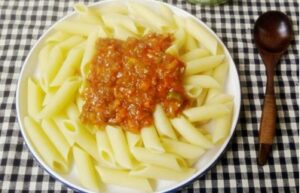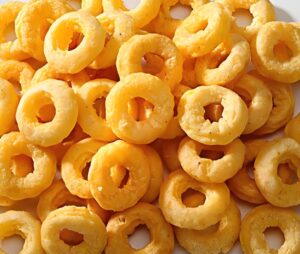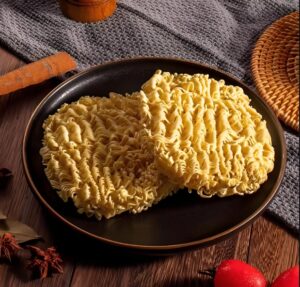A Comprehensive Guide to Different Types of Pasta
Italian pasta, with its incredible variety of shapes and sizes, is one of the most versatile and beloved foods worldwide. From long, thin strands to short, hollow tubes, each pasta shape serves a unique purpose in Italian cuisine, designed to pair perfectly with specific sauces and preparations. This guide explores the fascinating world of pasta, categorizing the most common types and explaining their ideal uses in cooking.
pasta making machine
ToggleIntroduction to Pasta Varieties
Pasta (or “pasta asciutta” in Italian) comes in hundreds of different forms, with estimates ranging from 130 to over 500 distinct shapes depending on regional variations. The diversity isn’t just for visual appeal—each pasta’s design helps it hold sauces differently, creating varied eating experiences. Traditional pasta is made from durum wheat semolina, which gives it a firm texture and golden color, distinguishing it from other noodle varieties.
Italian pasta shapes can be broadly categorized into:
- Long pasta (spaghetti, linguine, fettuccine)
- Short pasta (penne, fusilli, farfalle)
- Tube pasta (macaroni, rigatoni, manicotti)
- Stuffed pasta (ravioli, tortellini)
- Soup pasta (orzo, ditalini)
- Baked pasta (lasagna, cannelloni)
Each type has sub-varieties with slight modifications in size, texture, or regional preparation methods. Let’s explore the most common and interesting pasta shapes you’ll encounter.
Long Pasta Shapes
Long pasta is perhaps the most recognizable category, consisting of various lengths and thicknesses of strands:
- Spaghetti – The classic long, thin, cylindrical pasta whose name means “little strings.” It comes in different thicknesses: spaghettini (thinner) and spaghettoni (thicker). Perfect with tomato-based sauces, carbonara, or aglio e olio.
- Linguine – Meaning “little tongues,” these are flat versions of spaghetti, about 6mm wide. Their flattened shape helps them cling to sauces better, making them ideal for seafood preparations like linguine alle vongole (clam sauce).
- Fettuccine – Wider than linguine (about 8mm), these ribbon-like noodles are classic for rich cream sauces like Alfredo. The even wider version is called pappardelle (12-15mm wide), perfect for hearty meat ragù.
- Capellini/Angel Hair – The thinnest of long pasta (about 1mm diameter), named “angel hair” for its delicate strands. It cooks very quickly (3-4 minutes) and pairs best with light, brothy sauces.
- Bucatini – Like thick spaghetti but with a hole running through the center (bucato means “pierced”). The hollow center traps sauce beautifully, making it excellent for amatriciana sauce.
Short Pasta Shapes
Short pasta comes in countless imaginative forms, each designed to capture sauce in different ways:
- Penne – Short tubes cut diagonally at the ends (like a quill pen). The ridges (penne rigate) help hold sauce better. Great for baked dishes or with chunky vegetable sauces.
- Fusilli – Corkscrew-shaped pasta that traps sauce in its spirals. Often confused with rotini (which has tighter curls). Works well in salads or with pesto.
- Farfalle – “Bow-tie” or “butterfly” pasta with pinched centers. The thicker middle provides chewiness while the thin edges soak up sauce. Popular in pasta salads.
- Conchiglie – Shell-shaped pasta that comes in small (conchigliette), medium, and large (conchiglioni) sizes. The concave shape is perfect for holding chunky sauces or being stuffed.
- Orecchiette – “Little ears” from Puglia, shaped like small domes. Their rough texture helps grab sauce, traditionally served with broccoli rabe and sausage.
Tube and Hollow Pasta
These shapes are characterized by their hollow centers, ideal for stuffing or capturing sauce:
- Rigatoni – Large, ridged tubes (bigger than penne) with straight cuts. The ridges and wide opening make them excellent for meat sauces.
- Manicotti – Very large tubes (about 1-inch diameter) meant for stuffing with ricotta or meat mixtures, then baking.
- Cannelloni – Similar to manicotti but larger and sometimes flat sheets rolled around filling. A baked pasta classic.
- Macaroni – The familiar elbow shape (short curved tubes) used in mac and cheese. In Italy, macaroni refers to any short tube pasta under 4cm.
Stuffed Pasta Varieties
These pasta forms enclose delicious fillings:
- Ravioli – Square pillows of pasta filled with cheese, meat, or vegetables. Often served with butter-sage or light tomato sauce.
- Tortellini – Ring-shaped stuffed pasta from Bologna, traditionally filled with pork, prosciutto, or cheese. Served in broth or with cream sauce.
- Agnolotti – Half-moon shaped stuffed pasta from Piedmont, similar to ravioli but with a different fold.
- Gnocchi – While not technically pasta (made from potato or ricotta), these soft dumplings are a pasta menu staple. Perfect with sage butter or gorgonzola sauce.
Specialty and Regional Pasta
Italy’s regions boast unique pasta shapes:
- Lasagna – Wide, flat sheets used in layered baked dishes with meat, cheese, and béchamel.
- Orzo – Rice-shaped pasta used in soups and salads.
- Pizzoccheri – Buckwheat pasta from Lombardy, typically served with cabbage, potatoes, and cheese.
- Trofie – Thin, twisted pasta from Liguria, traditionally served with pesto.
- Paccheri – Giant tubes from Campania, great for stuffing or with hearty sauces.
Choosing the Right Pasta for Your Sauce
A fundamental rule in Italian cooking is matching pasta shape to sauce:
- Long, thin pasta (spaghetti, linguine) – Best with oil-based or light tomato sauces
- Ribbon pasta (fettuccine, tagliatelle) – Ideal for creamy sauces that coat evenly
- Short, tubular pasta (penne, rigatoni) – Perfect for thick, chunky sauces that fill the tubes
- Shapes with nooks (fusilli, farfalle) – Great for trapping creamy or pesto sauces
- Stuffed pasta – Typically served with simple sauces that don’t overwhelm the filling
This time-honored pairing ensures every bite delivers the perfect balance of pasta and sauce.
Conclusion
From the familiar spaghetti to regional specialties like trofie, the world of pasta offers endless culinary possibilities. Each shape tells a story of regional tradition and practical design, ensuring the perfect marriage of pasta and sauce. Whether you’re boiling up some penne for a weeknight dinner or crafting homemade ravioli for a special occasion, understanding these varieties helps bring authentic Italian cooking into your kitchen. The next time you see an unfamiliar pasta shape, remember—there’s probably a perfect sauce waiting to accompany it!









